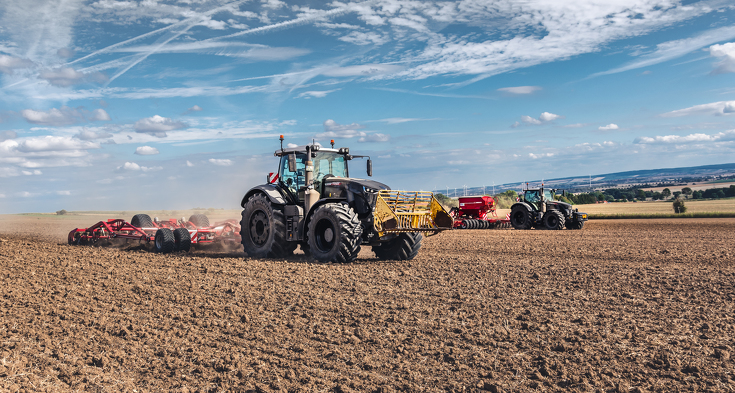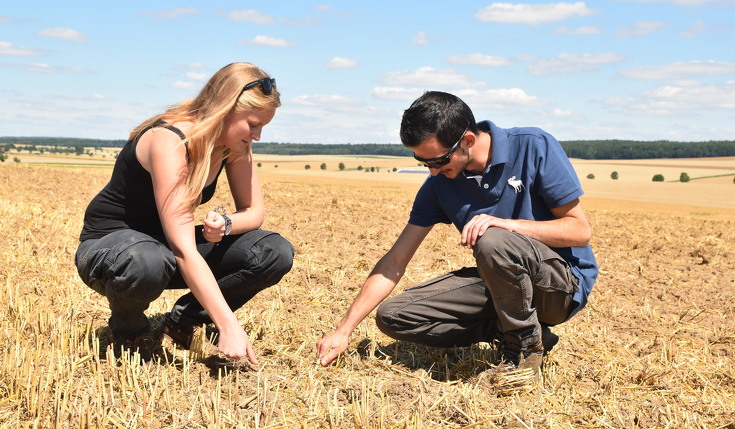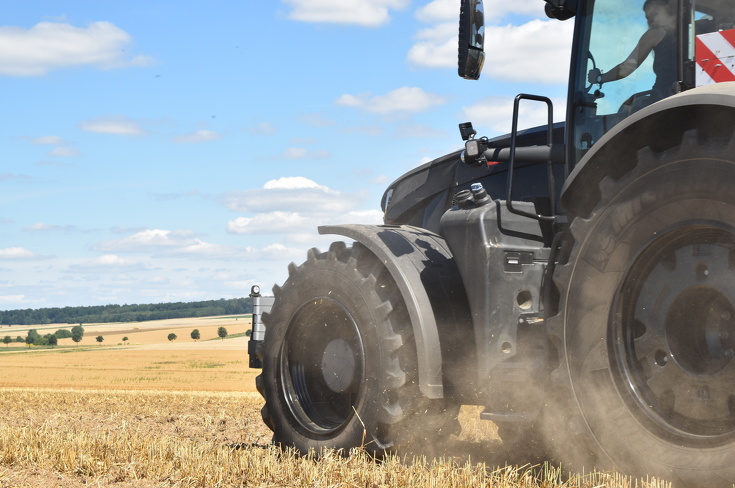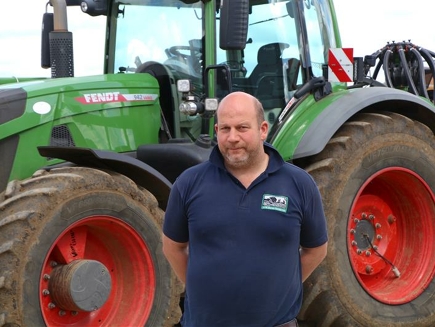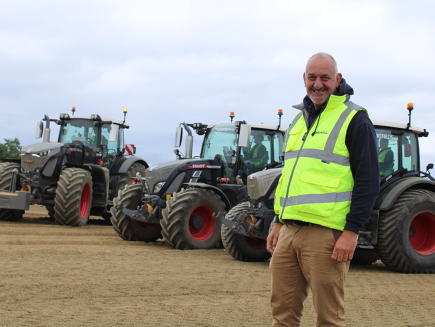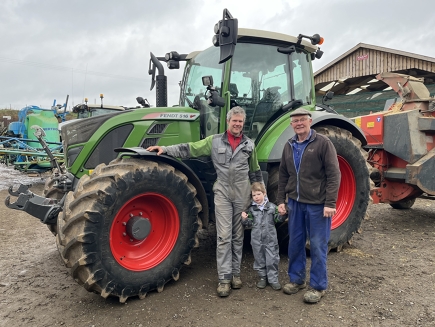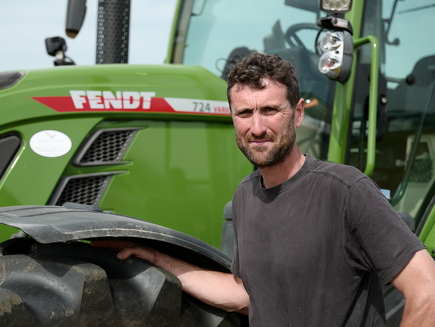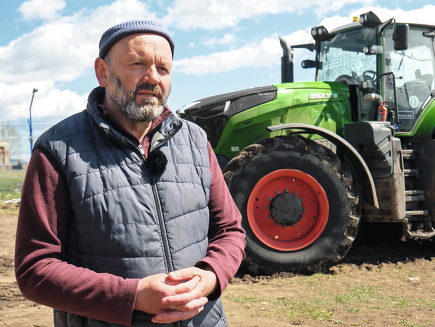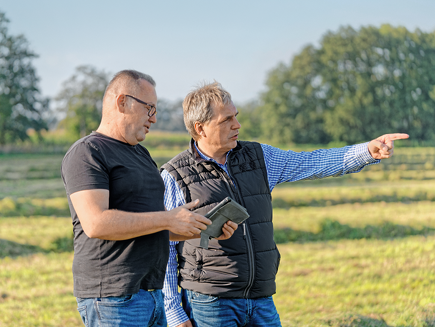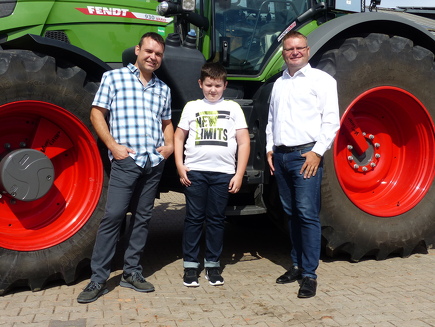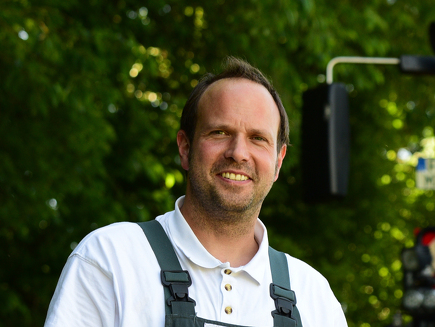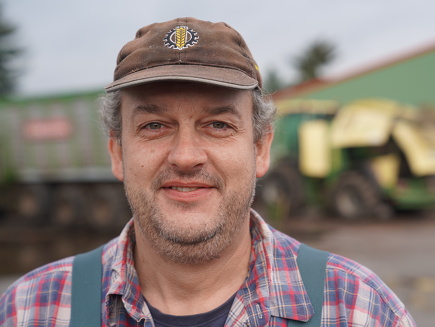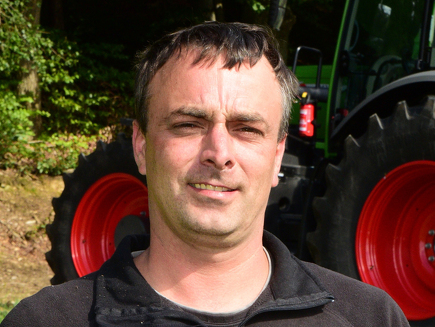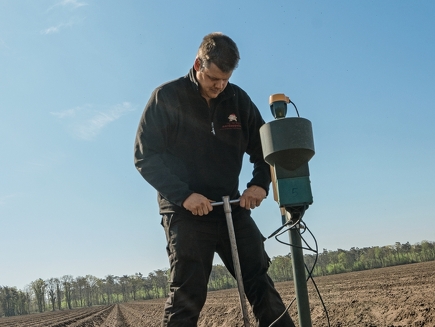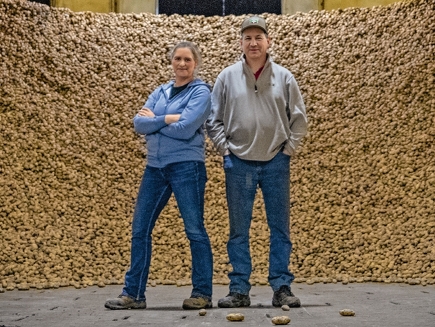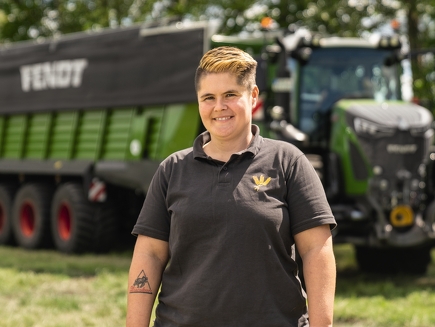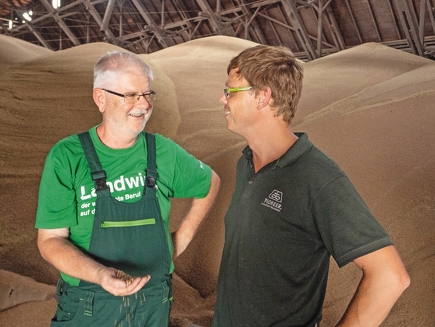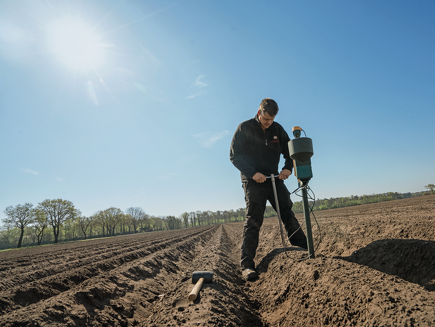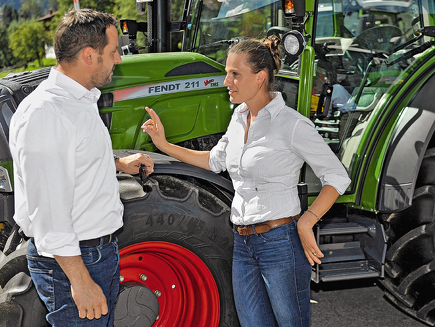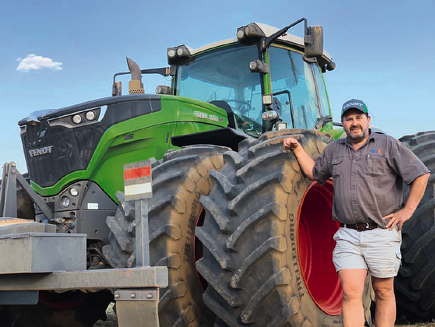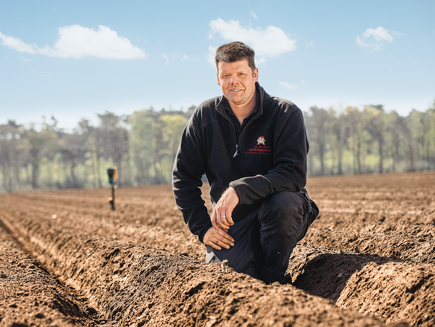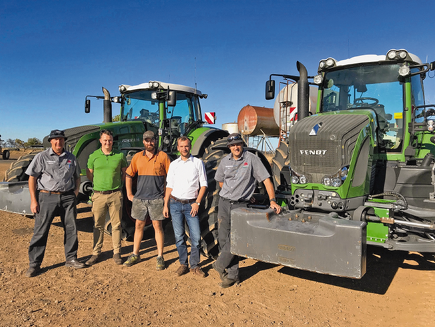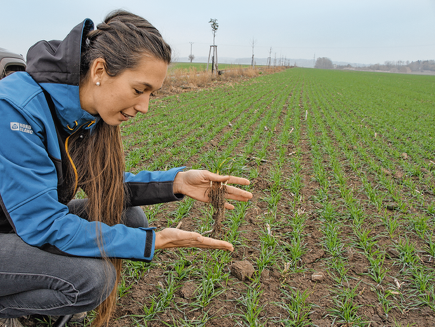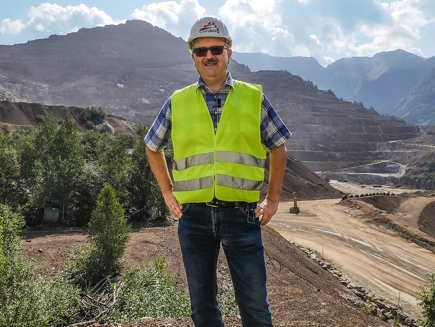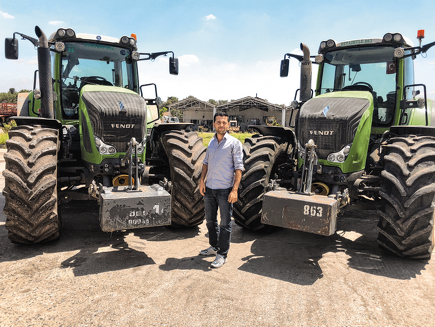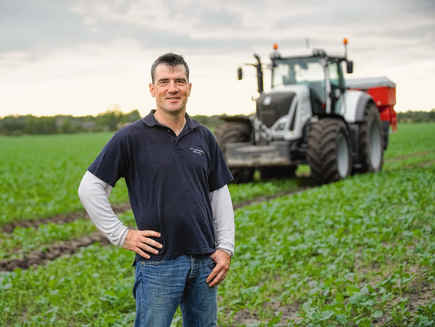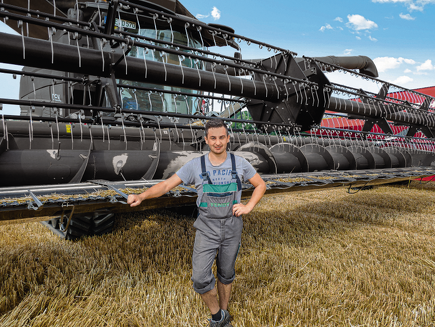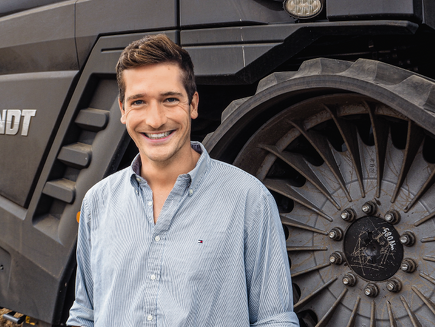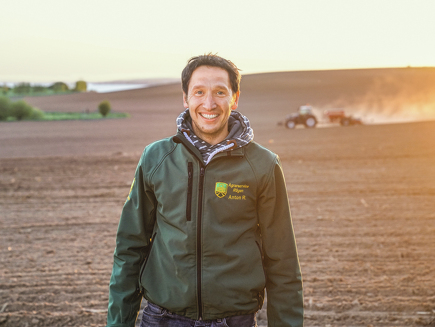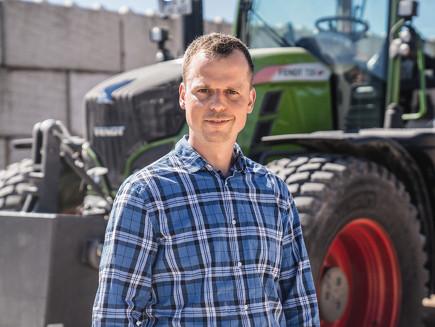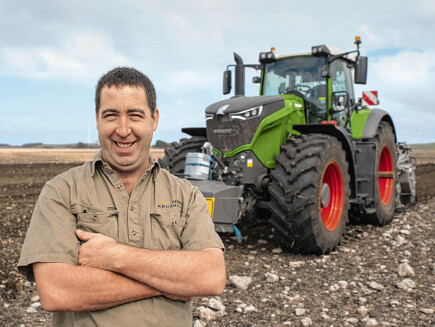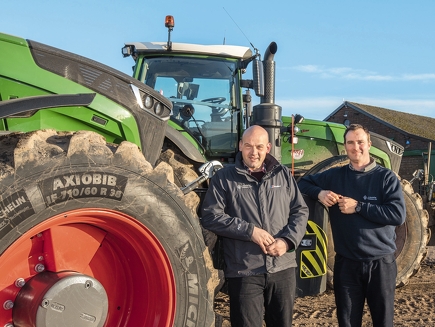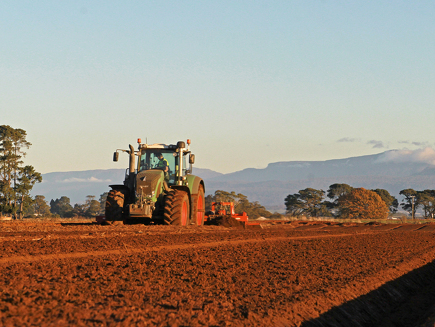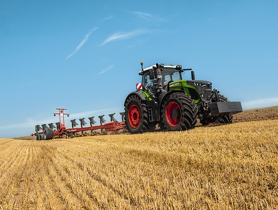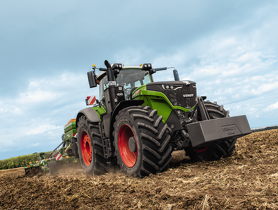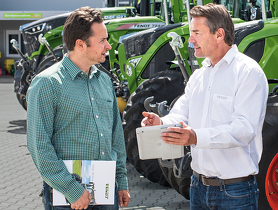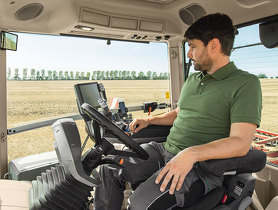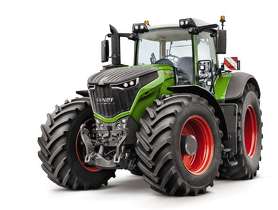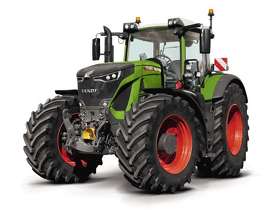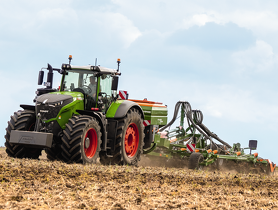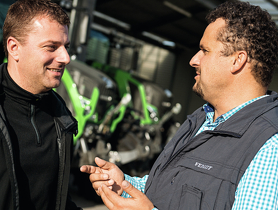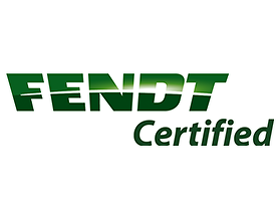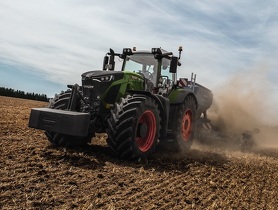It's mid-July, shortly after 9 o'clock in the morning, and the thermometer has already come close to the "heat-free" limit. A shady spot with a view of the farm seems to make the most sense for the interview, and not just because of Corona. Sitting opposite me are contractor Fitim Mehmeti and his employee Anni Hantelmann. The topics of conversation are to be tillage and experiences with the new 9 Series from Fendt. But first my gaze wanders over the farm - the residential building and barns suggest a time-honored estate and not a contracting company, I assume. "That's right," the contractor confirms. "This is the Wobeck monastery estate, which Falk Henties has leased along with the approximately 360 hectares of arable land - who, in turn, is also a partner in our contracting company M & H Agrarlogistik together with me," he explains. A separate contracting company for an arable farm? "Yes and no," Fitim Mehmeti continues. "Yes, because the efficiency and therefore machine utilization required in today's arable farming is no longer feasible, even with 360 ha. That is why Falk Henties does not invest in its own technology for sole use, but completely outsources field work to us as M & H Agrarlogistik. And no, because of course we work as a service provider not only for one customer, but now for twelve permanent customers in agriculture within a radius of 50 km."

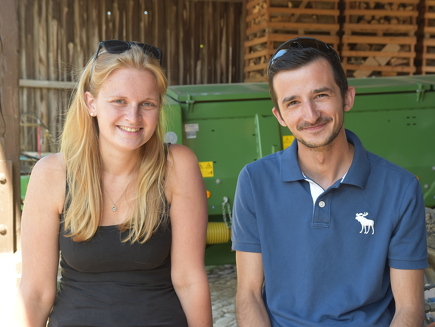
The 942 is easy going and overall a mature concept.


The 942 is easy going and overall a mature concept.

